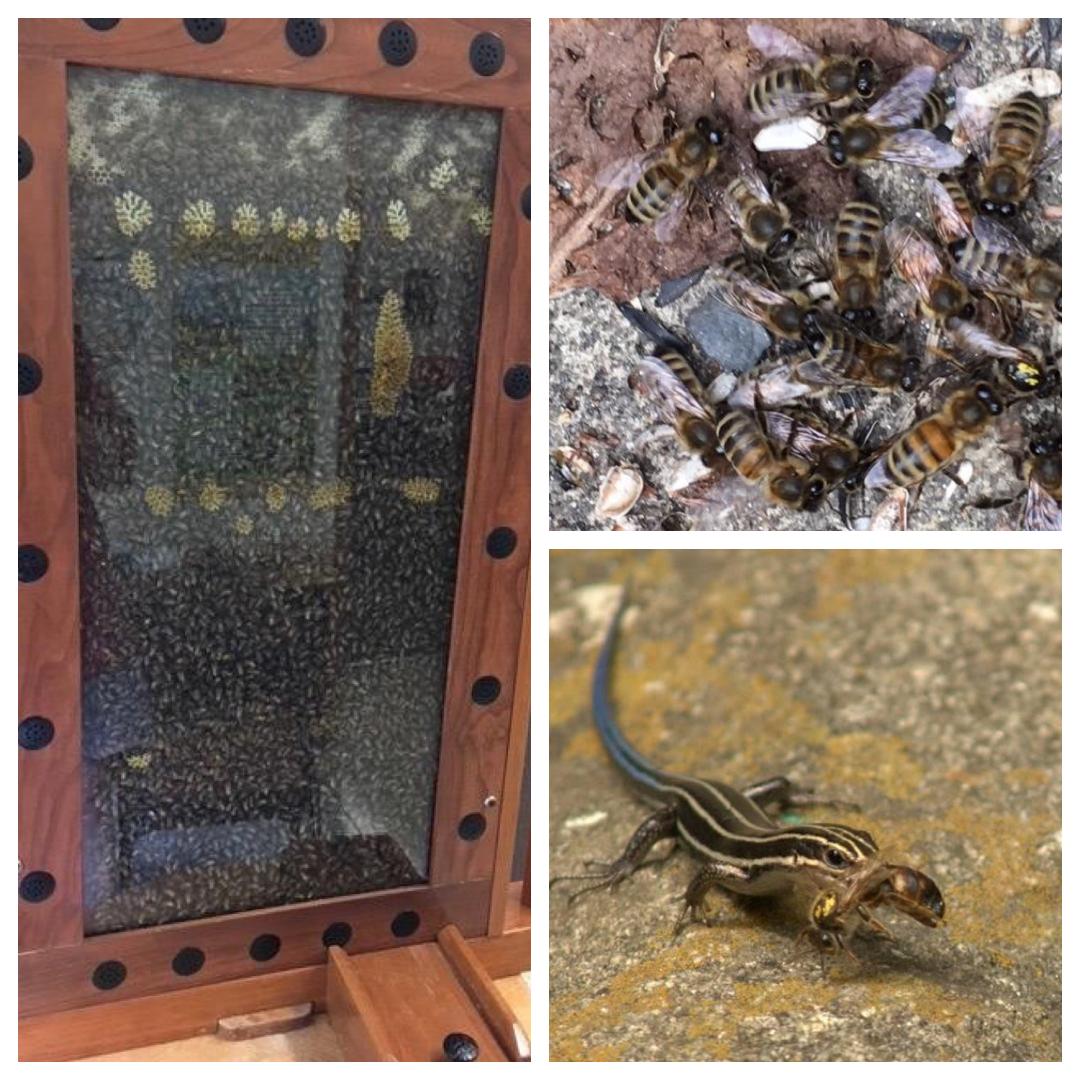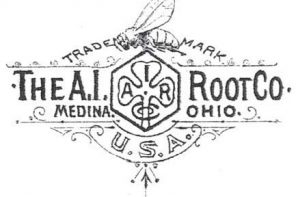By: Kim Flottum
 I’ve been talking with someone who is interested in starting a business dealing with the beekeeping industry. He has extensive, successful experience in wholesale, retail, mail order and store front sales in a somewhat related industry, and already has national and international connections.
I’ve been talking with someone who is interested in starting a business dealing with the beekeeping industry. He has extensive, successful experience in wholesale, retail, mail order and store front sales in a somewhat related industry, and already has national and international connections.
He has a good mail order set up, catalog experience and production, promotional and cross promotional projects and even TV, radio and an extensive internet reach for advertising, information and connections with customers.
He has, or had anyway, essentially zero bee experience when he fi rst started, but you can hire good bee people he says, but it’s a lot harder to hire good business people, and he has plans for both.
He wants to sell overwintered nucs and Spring splits because that’s what he, or his bee people, seem to think that they have fairly good control of when it comes to the quality of what they will sell. He has good ideas on both the genetics and the diversity of the bees he wants to sell, and has the resources to supply all the forage those bees will need to build, sustain, produce honey and overwinter.
All in all, the bee part of this looks to be mostly self-contained, with the only outside resources needed to come from the producers of new or better genetics. And he has some visions for that, too.
For the rest, at least initially, he wants to produce, maybe even invent, rather than buy and resell bee housing, and probably enlist local manufacturers to produce better equipment than he thinks is available now. The rest is being decided even as I write this relative to the equipment and supplies beekeepers need to keep bees.
But wait, there’s more. “I have looked, and my experience elsewhere fails to include a single example of a farming or manufacturing industry where the basic equipment is unchanged for 100 plus years”, he recently remarked.
I think he’s coming in right on the cusp of, perhaps, beekeeping’s “Great Leap Forward” in terms of all of the things he’s looking at. Materials, technology, services, genetics, sustainability, diversity, safety and profi tability. Right place, right time, with no preconceived notions, no ties to the past, no ‘That’s the way we’ve always done it’ cement shoes. Stay tuned to this station for a year or two while this all comes together. It’ll be fun to watch, even better to be a part of. I’m thinking you don’t need our good luck wishes, but they’re there anyway.
•
The Bee Internet Of Things. BIT.
Have you been paying attention to the way our world, that is the beekeeping world is moving lately. The internet, cell phones, data, artifi cial intelligence, smart hives, genius hives, gps locators, and more and more and more. The article above brings this to the fore in spades. “. . . unchanged for 100 plus years,” was the comment by someone just beginning to look at what we do on a regular basis.
Just this calendar year Bee Culture has covered Data Sharing for Commercial Beekeepers, Electronic hive scales, Trust and Data Sharing, The Sentinel Apiary Program run by BIP, Technology In Action – Commercial Apiary Management Systems, The ApisProtect Colony Monitoring System, Technology In Action – Hobbyist Platforms, Thermal Effi ciency, and this month The Songs Of Bees, and Optimizing Pollination With BeeHero.
Whether you are a two colony backyarder or a 20,000 colony commercial pollination, queen production honey maker, the world of zeros and ones is both here to stay and won’t get out of your way. So rather than fi ght it, embrace it.
We’ve covered several over the past year or so, but there are so many more. Of course, in our opinion, Hive- Tracks, https://hivetracks.com/ index.php, is a front runner in both promotion and technology simply because they pretty much got a head start, and have drawn in people from both the world of beekeeping and the world of IT (information technology) that are pretty sophisticated in their respective areas.
The BIP people have a vested interest in the equipment they use for remote sensing all over the place. I know they use SolutionBee hive scales because they work for them, and that says a lot.
But the list is long. Arnia equipment is pretty well known and seems to do what it says it will do. You can fi nd more at https://www.arnia. co.uk/. Solution Bee, https://solutionbee. com/, like the others is in the cloud and designed for both hobby and commercial operations. Broodminder, https://broodminder. com/, seems more aimed at the hobby and sideline market, checking weight and temperature, but they continue to change so don’t ignore their equipment either. OSBeehives, the Buzz Box system, https://www. osbeehives.com/, uses sound and your cell phone to tell what’s going on inside. More along the songs line it seems, but the network is up and running so maybe check it out.
There are others of course, but all of this brings me to where I wanted to start.
And that is, this BIT thing is probably only number 4 in really new things to enter the beekeeping world in the last 100 years, as noted above.
OK, back up a few pages. Jim Thompson, one of the writers of beekeeping history we like to use here has put together a list of all of the patents employed in bees and beekeeping relative to hive types and designs since Adam and Eve caught that fi rst swarm. It’s gotta be more than 100 pages, in tiny, tiny type on both sides of the page. Hundreds and hundreds of better ideas, all in one book.
This got me to thinking, which can be hazardous to you health. What is new lately, say, the last 100 years in our world? So, I went looking.
To look, you fi nd the catalogs of the major players in the industry. They sell what sells. They sell what beekeepers buy. Not, necessarily what beekeepers want or need, but what they will buy. For the most part anyway.
Of course BIT is new. But apparently nobody wants to use it because there’s nothing in any catalog remotely resembling any of the devices, technology or equipment noted that you can buy from any of them. At least yet.
So take a look. One thing, if you can make it out of wood, you can make it out of plastic. New stuff, not new ideas. But there’s lots of plastic out there, and more every year. Basic wooden boxes are the same as ever, but the Styrofoam and polystyrene plastics have eased some things for the bees relative to environmental stresses. But a 10 frame box is still a 10 frame box (and even eight-frames boxes are still eightframe boxes).
Some plastic things make some things easier. Honey house equipment that’s plastic now, instead of stainless or galvanized is a good step in the right direction, but an extractor is still an extractor is still and extractor. Put the frame in, spin out the honey, drain the tank. Century’s old technology.
And though there are more designs, a hive tool is a hive tool, a smoker is a smoker, and plastic foundation is still foundation.
Some things have come to us from outside our world that we have adopted with enthusiasm. Consider the pallet and the forklift. Much better than one at a time muscle power. But that pretty much already existed in some form before we took it as our own. Not new, but better.
Interestingly, we are going back to overwintering in caves again. Special caves now, controlled this and that, but caves, for protection from the elements. And the food we give them is, well, some of it is better than 100 years ago. Some not so much perhaps, but some, but then so is the food we feed chickens and our kids.
Anything else? Bottles are bottles are bottles and that hasn’t moved off square one much. Plastic, again, has replaced glass to some degree. But the purists still want glass, for reasons known only to sticky bottle tops. And the plastics are now upside down making them even easier to use, so they get used a bit more – that was a good move, but a bottle is still a bottle.– So, anything? I’ll point to two things that didn’t exist 100, or even 50 years ago that have really changed our world, again in my humble opinion. The fi rst is the Sheriff Beesuit design. Copied to death since it fi rst came out for a very good reason. It doesn’t leak bees. It took chance out of the equation and any, and everybody could and can work bees without fear, without hesitation and have fun doing it. That suit design changed the world of beekeeping, in my humble opinion.
But what about honey sticks? Probably the cleverest marketing tool to come along since sliced bread. You can sell them as is, you can give them to kids and then parents buy the rest, you can use them as tasters, you can use them a million ways for almost free.
But any more, I’ll bet Langstroth could drive by a beeyard, and go, “Look, bees!” don’t you think? And A.I. Root could walk into nearly any honey house and ask about settling tanks and fi lters. I don’t think we could fool either of them.
But I’ll bet a farmer from 150 years ago wouldn’t have a clue what he was looking at watching a no-till planter putting in seed treated GMO corn, or why was that just planted fi eld being sprayed with what ever that stuff is.
I’m not blaming the suppliers for this. They sell what sells. They sell what beekeepers want to buy. Sometimes they take a chance and cast their nets upon the water and see if this new idea might work, or not. After a couple of years, it does, or it doesn’t and everybody has a plastic something instead of a wood something, but it’s still the same thing as before.
So, I’ll go back to where we started with this new business operator noting nothing’s changed in the last 100 years. And, with the exception of what I consider only four things, I think he’s more right than not. So what are those four things: Plastic everything, the Sheriff beesuit, Honey Sticks – and The Bee Internet of Things.
I may be wrong however. Get back to me in 100 years and let me know what I missed.
•
You know where the sounds inside a beehive is going to go, don’t you? I’ll bet, maybe $20, that inside a decade, there will be a sensor inside every beehive on the planet (that wants one) that will be doing something similar. The size of a dime, costing a buck each. In a bee yard they talk to each other, summarize data and send a message home on a daily (or more or less often) basis telling home whatever it wants to know. At home the data is summarized again so labor can be perfectly assigned, equipment used effi ciently, problems solved before they are problems, and warnings heeded and headed off. Somewhere, back home, every beeyard is categorized, labeled, examined, evaluated and fi xed, abandoned, or improved or encouraged or added to or taken away. The need, and role of the experienced beekeeper will move to marketing, weather analysis and fi nding help. Recognizing AFB will be a thing of the past. Just wait and see.
•
There’s lots to do coming up. The California Honey Festival in early May, Virginia in late May, Pollinator day here and EAS in SC in August and Apimondia and Mother Earth in September will keep us hopping. Hope to see you at one or more of these events. May Summer be kind to you and your bees.









